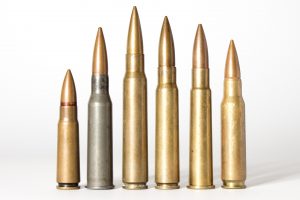How are patents and power intertwined? In their new book, “Patents for Power: Intellectual Property Law and the Diffusion of Military Technology,” Robert Farley and Davida H. Isaacs explore the linkages between intellectual property law (IP law) and the development of technology. Farley, a senior lecturer at the University of Kentucky’s Patterson School of Diplomacy and International Commerce and longtime contributor to The Diplomat, discussed IP law, military technology, and innovation with The Diplomat’s managing editor, Catherine Putz.
The book opens with a vignette about the development of the AK-47. Why did you pick that as the place to start your discussion about the intricacies of intellectual property rights and military technology?
The story of the AK-47 is well-known to many, but is particularly interesting from an intellectual property perspective. IP protection isn’t the only reason that the AK-47 spread across so many countries and the AR-15 did not, but it’s part of the story, and it’s illustrative of how intellectual property law affected the innovation of military technology in very different legal systems. The differences between intellectual property protection in the United States and the USSR helped to create the environments in which each weapon would be produced, and consequently how many of the guns would end up where. It’s counterintuitive and somehow obvious at the same time.
In what ways have intellectual property rights influenced the development of military technology? Has this changed over time as technology has become more sophisticated?
Yes; indeed, there is a tight connection between the development of intellectual property protection and the modern defense industrial base. Governments have tried to use patents to protect and encourage military producers for a very, very long time. Katherine Epstein tells this story well in her wonderful book “Torpedo,” which details how market conditions and changes in technology made it necessary for private inventors and the state to work together at the beginning of the 20th century. Effectively, the sharing of responsibility between the inventor and the state (made necessary by the huge expenses associated with initial production) necessitated a body of law that would accord rights across all of the relevant parties. Thus was born the modern era of intellectual property protection in the defense sphere.
Why do you think the intersection between intellectual property rights and military technology has been underexplored to date?
There’s long been a tension in the field of international relations between the study of international law and the study of war and conflict. In the 1930s a conflict emerged between different schools of thought, one of which emphasized the conflictual nature of international politics, and the other the prospect for using law to regulate international society. Those who study conflict often disregard the importance of law, especially when it seems that states can so easily toss that law aside; those who study law often overlook the impact of legal structures on how states prepare for war. This is a caricature, of course, and much has changed in recent years, but it is important to appreciate that law and conflict are intimately intertwined.
Is there tension between intellectual property rights and innovation?
Of course. There’s a contradiction between the need to share technology across an industry on the one hand, and the need to protect the incentives of inventors on the other. There have certainly been occasions in which robust patent law came into conflict with military innovation; a great example involves the unwillingness of the Wright Brothers to license certain inventions to other airplane makers during World War I. There is also much to criticize about the way that the U.S. Department of Defense manages intellectual property, which has affected its relationships with small, innovative firms. All that said, in an important sense patent and trade secret law gives companies confidence to share with one another and to license each others’ inventions, which (in a well-regulated system) can enhance innovation.
What mechanisms does the United States have vis-a-vis countries like Russia or China, which seem unlikely to cease attempts at economic espionage and associated violations of intellectual property rights?
The modern defense industrial base is about systems aggregation; many different companies produce components for eventual assembly by the defense industrial giants, even in Russia and China. Many of these companies are themselves dependent on exports, or have business that runs across borders. When companies that violate intellectual property operate abroad, they run the risk of falling subject to local jurisdiction, which often itself depends on the overarching structures of international intellectual property law. This makes companies that use stolen technology to contribute to Russian or Chinese (or any other) weapons vulnerable to legal action abroad, even if Moscow and Beijing can offer protection at home.

































